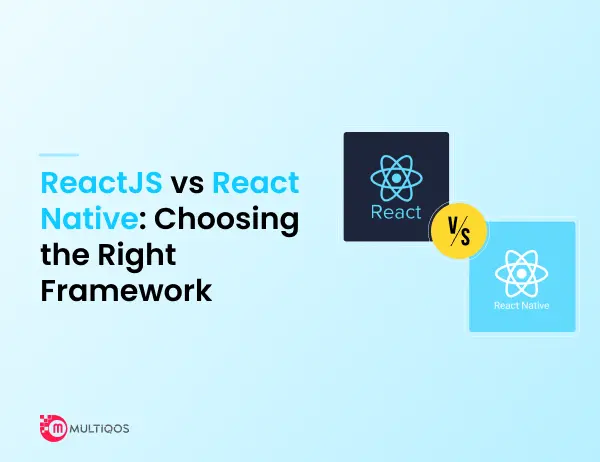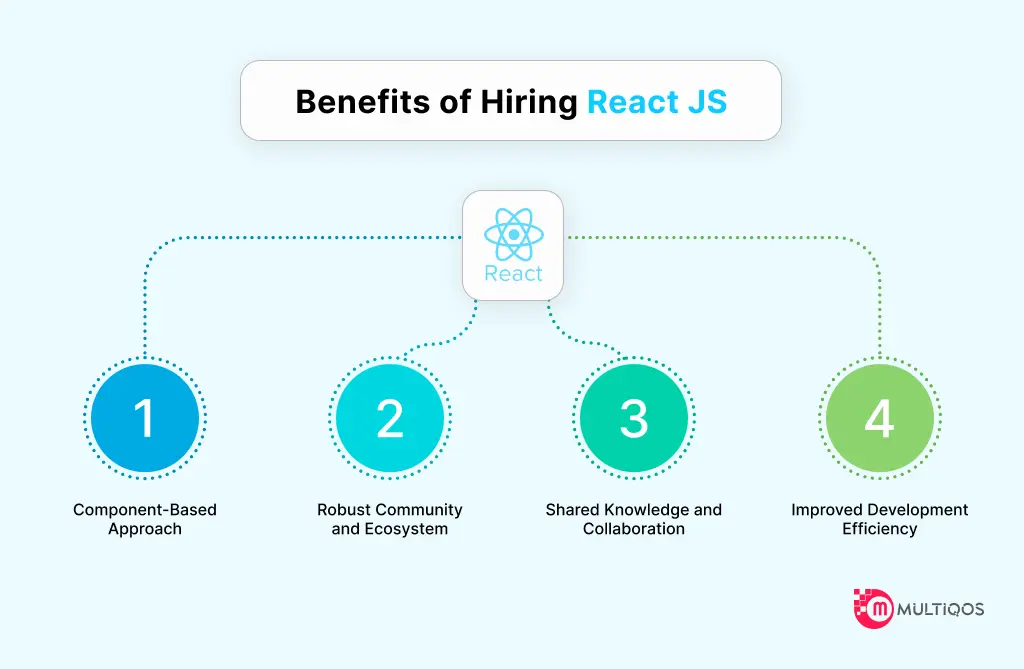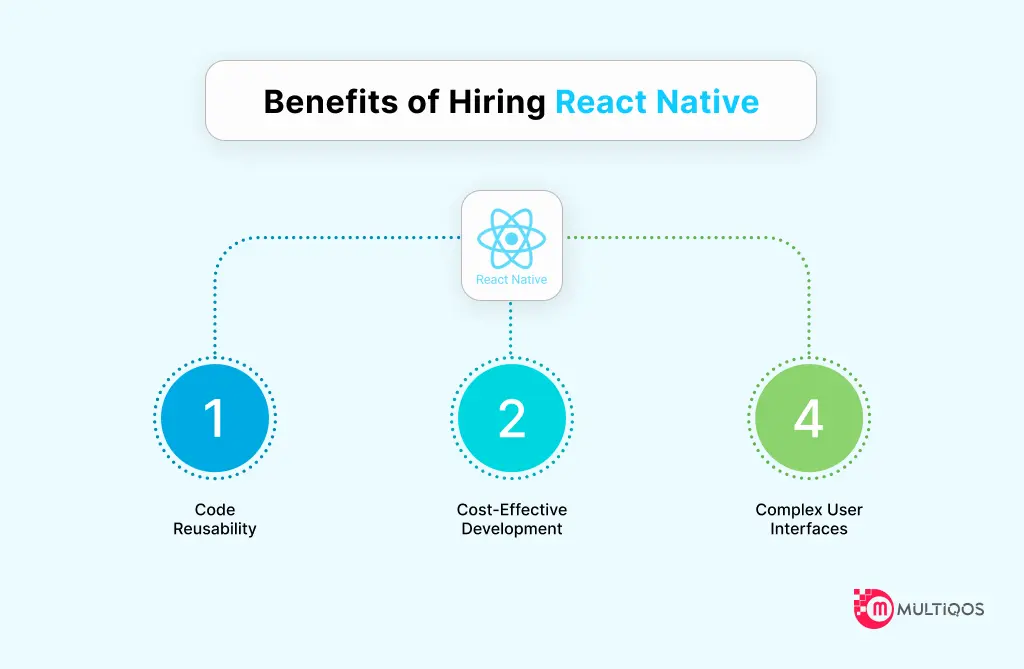React vs React Native: A Comprehensive Guide to Choosing the Right Framework

When it comes to building interfaces, two powerful frameworks stand out: React JS and React Native. Both have found a lot of support from developers in the process over the years. There is an open source framework for building user interfaces called React or React.JS, where JS is used in the building of web applications.
On the other hand, it is a sixth-year open-source technology that is based on JavaScript, where developers can easily build mobile applications for both iOS and Android. According to a survey on the usage of JavaScript frameworks, over 41% of developers are opting for React out of all the frameworks.
Meanwhile, React Native is used by 32% of software developers all over the world. Both of them are one of the most widely used frameworks, and deciding on how to integrate them may be considered a critical decision that is not as easy as it seems.
To amplify further, they are also used for the different platforms. As we have seen in this React vs React Native comparison, it is evident that they have some similarities and differences, but the real question remains: again, as among them, who is the champion?
What is React JS?
React JS is one of the most respected JavaScript frameworks in the world of development since it provides elaborate features for building user-oriented web-based applications.
Another principle observable in the structure of React applications is the use of the componentization model, which allows components to be reused and divided into logical parts.
The approach is advantageous to businesses since it means that they are faced with easier and more manageable applications. As of today, many popular websites, including Facebook, use this platform as a foundation for their development.
ReactJS development divides the UI into components that are independent and can be reused. This is helpful in a way that developers resort to to effectively manage and maintain even the most complex software.
When hire React JS developer, it is valuable to learn that they have an understanding of the myriad opportunities and advantages of applying React JS. These benefits include:
Benefits:
- Component-Based Approach: The component-based nature of the React framework makes it possible to leverage existing components, which is helpful when maintaining and scaling applications.
- Robust Community and Ecosystem: Since the release of React, libraries, tools, and resources of various natures have been developed by a large community of developers. This will help to solve problems as they occur and also provide constant support as well as more and new ideas.
- Shared Knowledge and Collaboration: Hired developers are on the opposite side; they are able to draw on a broad knowledge base and industry discussions as made through the React community. The ability to tap into a library of components and solutions baked in by other developers also helps reduce the time taken in the development of the apps.
- Improved Development Efficiency: The rich ecosystem and availability of various tools within the React environment make the whole software development process faster, hence the increased satisfaction among stakeholders.
What is React Native?
React Native is a tool that can be used to build applications and is an extension of the standard React, focused on mobile applications. It is an application development tool that uses JavaScript in the development of applications to be used on both the iOS and Android systems.
One of the main benefits of this framework is the ability to get access to a wide set of interface elements that are similar to native applications in their appearance. You mean that the business can design an app that functions like a native app on those platforms within a short span of time and with less investment.
In actuality, when using, for example, React Native, professional developers can build an app with the interface that will look and feel like a native app, but, all the same, it will offer the great advantage of being written just once.
That brings about order and efficiency in the process of development since the user experience is also regulated between platforms.
Benefits:
- Code Reusability: The native developers can write code once and use it for multiple platforms, which saves a lot of time and effort in creating applications for each platform separately.
- Cost-Effective Development: React Native is a cost-efficient solution, especially for startup firms and businesses with the intention of developing quality applications without necessarily paying fortunes, as is the case with native applications.
- Complex User Interfaces: It is worth noting that React Native is quite capable of handling complex UIs and is designed to be highly extensible with a large number of tools and third-party libraries. Due to these features, it can be recommended for industries that require the development of strong and complex applications for mobile devices.
React Native vs. ReactJS: How Do They Work?
You may be wondering what goes on in the background for both React and React Native.
React use the Virtual DOM for creating an astounding UX, and React Native brings native APIs into play to render the UI components that can be used for both Android and iOS.
Virtual DOM for ReactJS
A document object model (DOM) is a programming interface that provides the content of a web document. The way libraries and frameworks deal with the DOM affects their usage and rendering.
The virtual DOM is one of the game changers in the case of React. It is a replica of the real DOM and can be used when developing dynamic UIs since it can be updated faster. The major advantage is that the virtual DOM is faster and provides better performance and user experience compared to real DOM updates.
Local APIs for React Native
While React Native uses Java APIs to render the Android components and Objective-C for the iOS components when rendering the UI components, JavaScript is then employed to build the rest of the code and to tailor the app for each platform so that each component can be reused as much as possible and the code can be shared as much as possible.
React Native doesn’t leverage CSS and HTML like ReactJS does. Instead, you create style sheets in JavaScript to fashion React Native additives. While those fashion sheets may also look just like CSS, they are no longer equal.
In React Native, you use <Text> instead of <p>, and <View> instead of <div> in ReactJS.
Real-Time Example
For ReactJS:
function tick() {
const element = (
<div>
<p>Hello World</p>
</div>
);
ReactDOM.render(element, document.getElementById(‘root’));
}
setInterval(tick, 1000);
For React Native:
import React, { Component } from ‘react’;
import { Text, View } from ‘react-native’;
export default class HelloWorldApp extends Component {
render() {
return (
<View>
<Text>Hello World</Text>
</View>
);
}
}
Useful Tip: To run a React Native app, you need Android Studio for Android or Xcode for iOS on your device. You can then decide whether to run the application on a simulator or directly on a device.
A Major Difference Between React Native and React JS
In a continuous debate between React Native and React JS, it is crucial to understand that these two frameworks are indeed different in terms of the platforms they are designed for and how they render the interface.
React is built solely for web development and performs the best when it comes to rendering components to the DOM of the browser. On the other hand, React Native is designed for building mobile apps and paints components directly onto native platform UI widgets, making it native.
React Native provides a rich set of UI elements designed for mobile platforms, as opposed to React, which is based on HTML and CSS for UI layout in web applications. Furthermore, React Native is more portable than React, which can be used in web development services only.
Based on your needs, you can make a decision between React and React Native, focusing on these differences.
React Native vs React JS: Adoption and Popularity
Let’s analyze the adoption and popularity of React Native vs React JS in 2024 based on various metrics:
Job Opportunities
From websites such as Indeed and LinkedIn, it was found that, at the moment, there are more vacancies for React Native developers than React JS developers. This shows that there is a higher demand for skills in React Native as compared to React JS.
GitHub Stars
The repository on GitHub containing the React Native framework has more than 130K stars, and the repository with the React JS framework has more than 200K stars. React Native is less popular, but it is used frequently and gains popularity rather quickly.
npm Downloads
In the last 30 days, the React Native library was installed more than 50 million times, while the React JS library was installed 30 million times. This indicates rising trends in React Native.
Google Trends Interest
Analyzing the data obtained from Google Trends, one can conclude that the trend in the case of React Native is higher than that in the case of React JS at the international level by 2024. The trend of interest in React Native is constantly increasing.
Survey Results
According to the surveys conducted among developers, StateOfJS, Stack Overflow, and others show that React Native is growing much faster than React JS in recent years.
New Projects
Looking at newly developed open source and commercial projects, more adoption of React Native is observed for new mobile applications, while React JS continues to be widely used for web applications.
What Should I Learn About React Or React Native?
Now that you have a clear understanding of React and React Native, you might be wondering which one you should learn. Although designed for end-product platforms, both follow the same principles and methods for development.
Learning one can make learning the other easier. However, in order to develop a React Native app, you need to learn React first. But that’s not all!
Developing native applications requires a deep understanding of native elements, which React Native only partially supports. If you need to create a web or mobile application, it will be appropriate to recruit the services of React or React Native developers. They can prove to be incredibly useful in this regard, contributing a lot to your project.
However, if you already know Javascript, you will find it easier to learn React since the foundation will have been made.
So, what are you waiting for? If you are looking to hire dedicated developers, the talented team at MultiQoS, a leading mobile app development company, will surely exceed your expectations.
FAQ on React vs React Native
React Native is not obsolete or a useless framework to be developed in. These are familiar applications, and several of them are developed using the functions of React Native, including Tesla, Skype, Wix, and UberEats. The above cases show that React Native is a strong and current framework still being applied in development.
React Native is employed in Android, iOS, Windows, tvOS, and web application development. It offers a natural look and feel; it eliminates high costs when developing applications; it takes less time to perform applications; and it increases the application’s performance. Therefore, React Native proves to be the best when it comes to the development of mobile applications.
Both ReactJS and React Native are strengths for enterprise applications. Some of the common places where React JS is used include internal dashboards, admin panels, and data-driven web apps in enterprises. On the other hand, React Native stands out in building customer-facing mobile applications with a native look and feel, as well as access to device capabilities.
React, and specifically React Native, are closely connected, yet they have certain differences in their work principles. Like vanilla React, React Native does develop native user interfaces and does require different styling compared to web React. Some logic and components can have some similarity, and some of the components or logic can be ported, but in general, React and React Native are not exactly compatible.
React Native is famous for its increased speed of development because of its features of reusability of sources for different frameworks. One can create an application that has a double-code base for both iOS and Android, saving loads of time in development since the majority, if not all, of the codes can be written, used, and even tested at once.
Get In Touch








